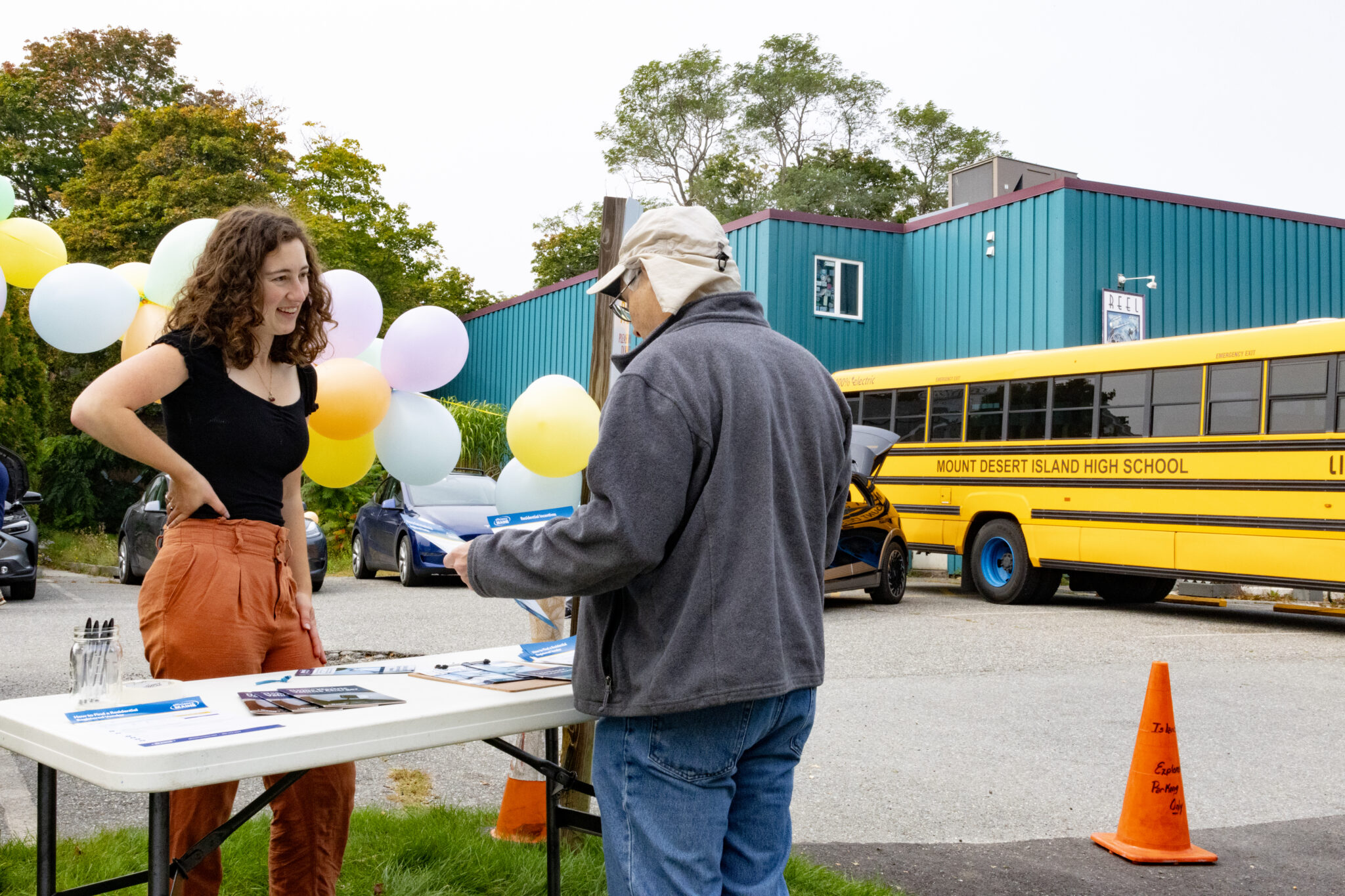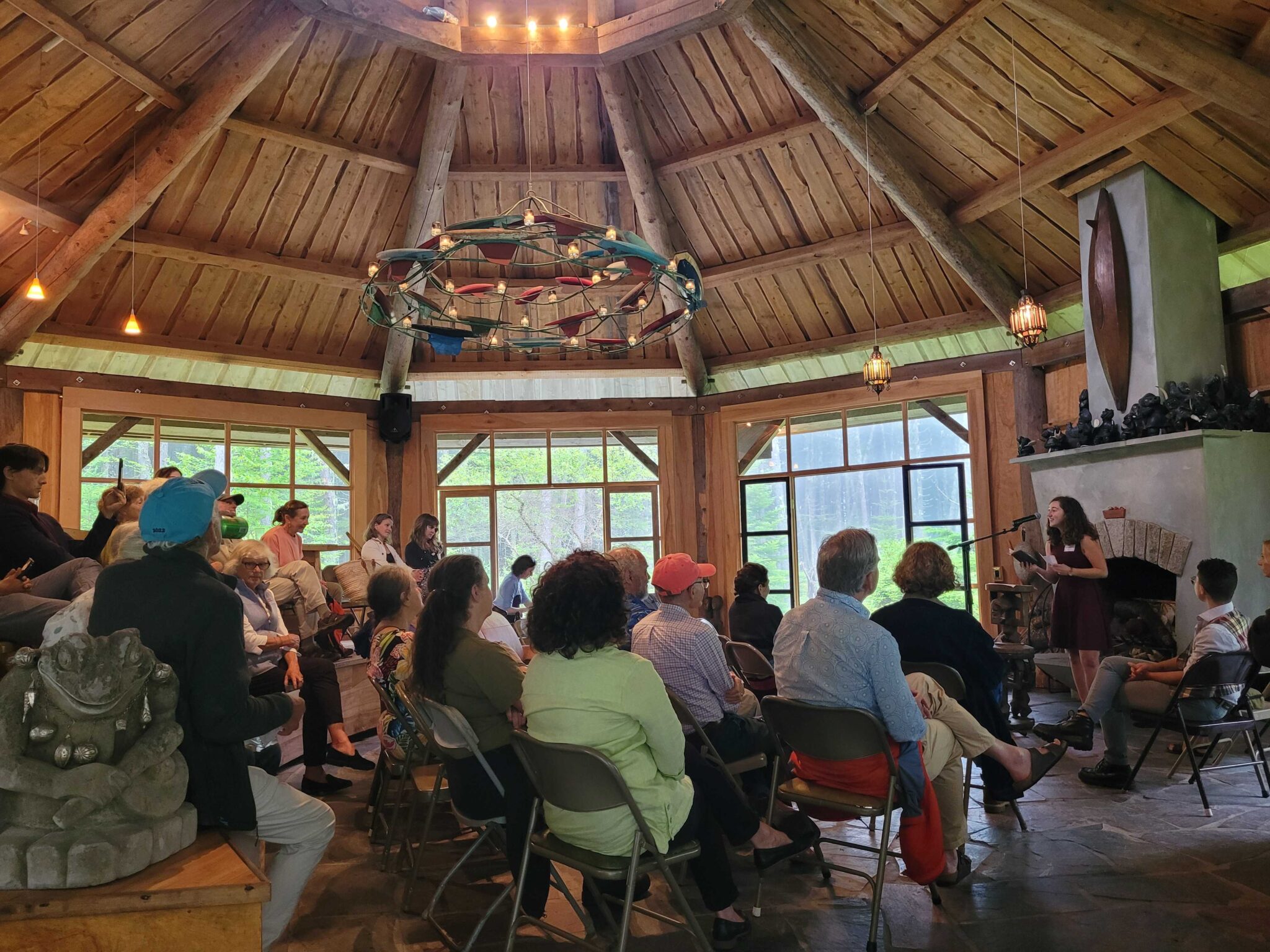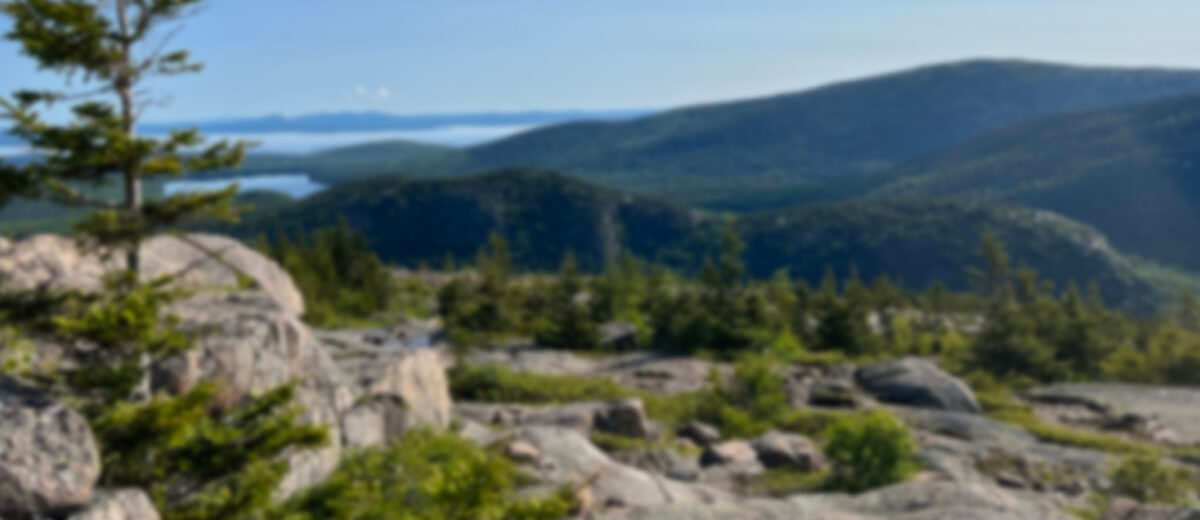by Brianna Cunliffe, Community Engagement and Resilience Coordinator (A Climate to Thrive and Island Institute Fellows Program)

My work is all about the stories that tether us to action, and the exact question posed by the Acadia National Park Science Symposium session: why do we do what we do.
My answer has to do with where I come from, what I love, and what I believe is worth fighting for. I grew up in Wilmington, North Carolina, a small coastal city reliant on tourism, where hurricanes are a normal part of life. But I watched the storms worsen throughout my childhood at the same time as I was reading books up in pine trees, making messy science fair projects, and singing in choirs. From biology to poetry to politics, my interest shot in many directions, nurtured by my educator parents, and only found a focus during a moment of reckoning. During my first week a thousand miles away at college, the worst hurricane in recent memory devastated my hometown, turning its peninsula into an island, knocking out electricity and cell coverage. I didn’t hear from my parents for four days. I knew then what my life’s work must be: changing the trajectory of our climate crisis. A crisis that is not just going to happen someday to someone somewhere, but that has already impacted the people and places I love and call home.
When I dedicated myself to climate work and began engaging in study, activism, and then eventually a career in the field, I realized that all my divergent interests came together in a fruitful and joyful way. Storytelling, science, art, policy, the outdoors: they all were part of creating a movement for community-driven climate solutions. I was in a position to thrive at the intersection of my many curiosities and skills, and channel the many things I find life-giving into a cohesive mission. At A Climate to Thrive, our approach to community-driven climate solutions starts with shared values, building from that through a shared connection to place and co-creating a vision for how that place can flourish. A key example of this is the community conversations we had while creating Tremont’s Community Resilience Plan, which illuminated residents’ worry about worsening prolonged winter power outages. Based on this concern for our most vulnerable neighbors in times of crisis, we were able to build a proposal for a Resilience Hub, powered by solar and battery storage, to retain power during outages to support our first responders and provide critical services like a public place to keep warm and receive life-saving care. This project embodies our mission: improving the lives of our community, building a more resilient future, and decreasing emissions at the same time. In the process of working towards this, I get to learn from scientists and the wisdom of the incredible ecologies we call home, and I get to collaborate with others to solve wicked problems and tell better stories about where we go from here. It is joyful and serious and communal and complex and exciting and heartbreaking and healing; it is the only thing I could imagine myself doing in this moment. I do what I do to make meaning in the world, for myself and others, amidst senselessness, and to delve into the opportunity inherent in this upheaval to make something new.


